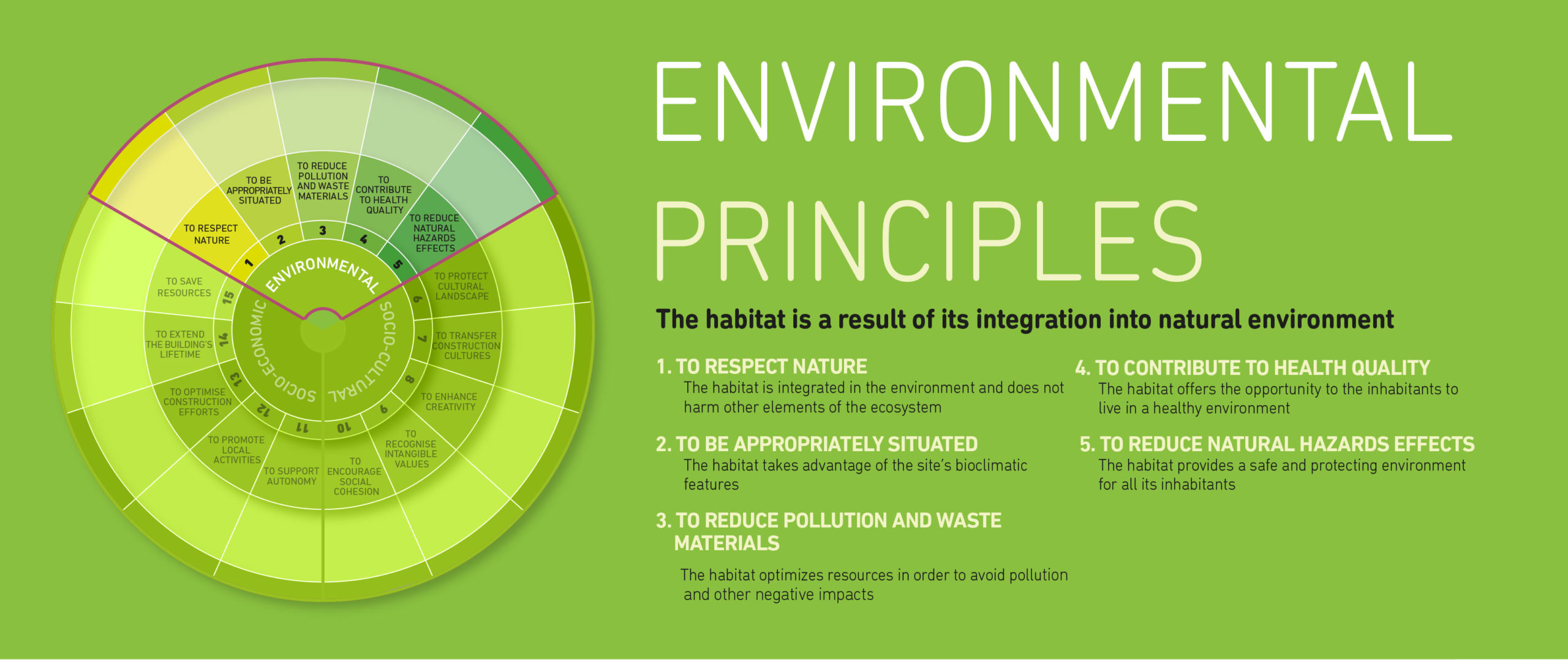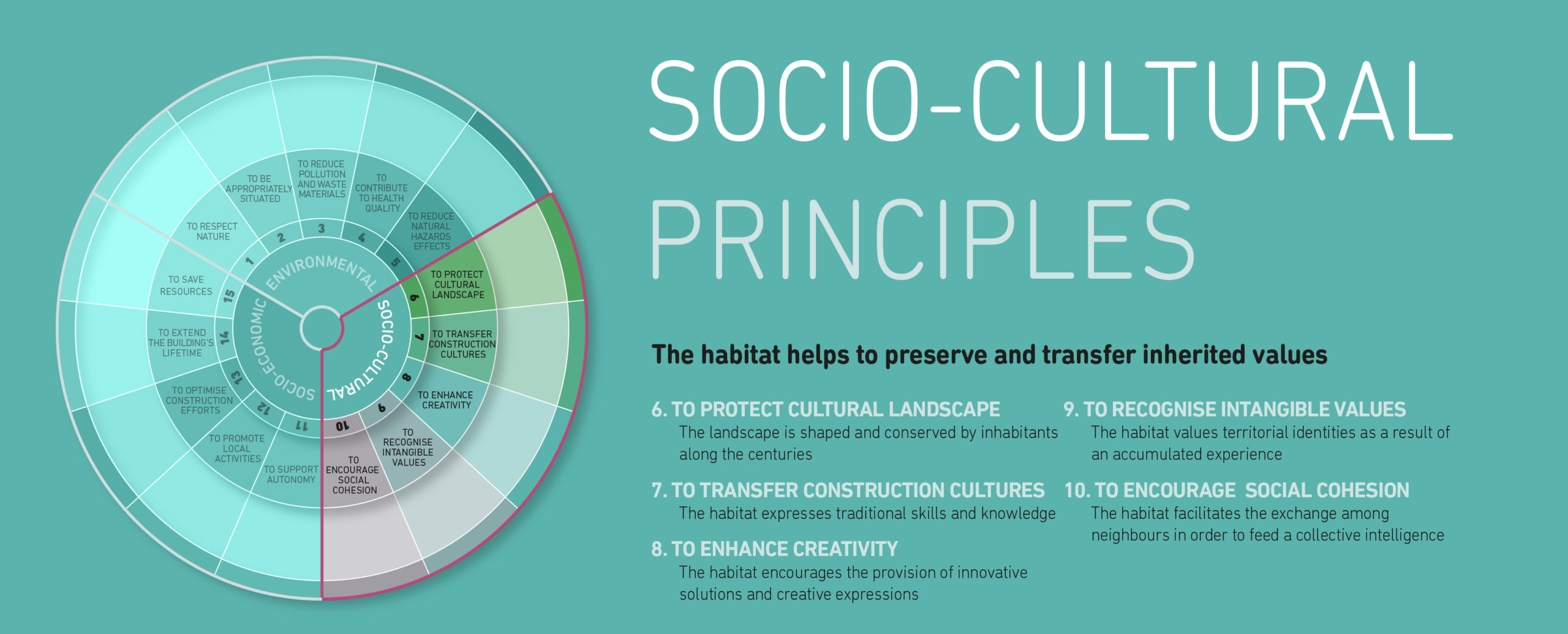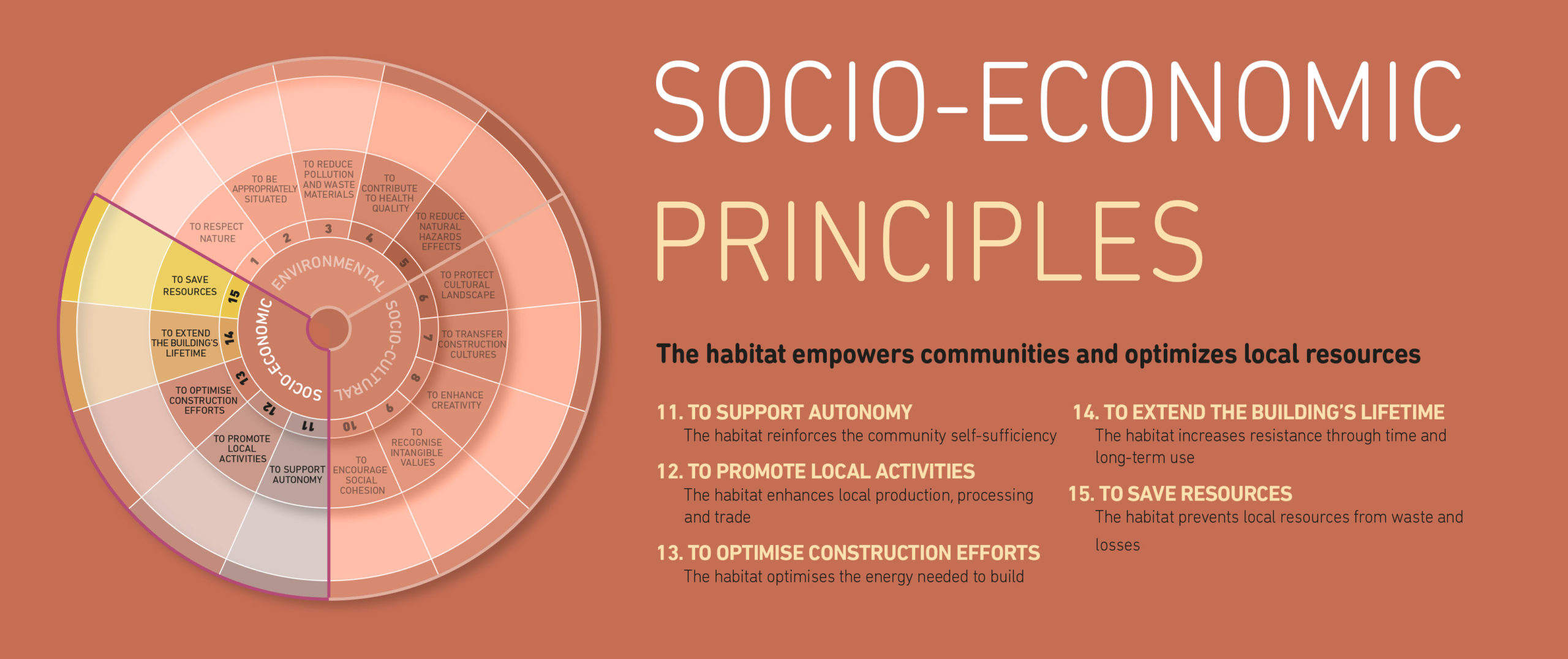VerSus Methodology

The project VerSus+ ǀ Heritage for PEOPLE continues the methodology proposed by the previous VerSus: Lessons from Vernacular Heritage for Sustainable Architecture. This research method was defined in order to develop a conceptual approach to gain operational knowledge from the study of vernacular heritage. The aim was that for the knowledge achieved to be easily integrated into the architectural design process. This knowledge would be extracted under the approach of sustainability. However, this concept would be addressed from a transversal, holistic and multidisciplinary perspective.
The method of study of vernacular architecture was based on three main levels of reading:
- Three sustainable scopes: environmental, socio-cultural and socio-economic.
- General aims and needs related to each sustainable scope.
- Principles and strategies learnt from vernacular heritage for the design of a more sustainable and eco-friendly architecture.
The principles associated with each sustainability domain were identified and studied in a collection of vernacular habitats in France, Italy, Portugal and Spain. These principles, translated into applicable design lessons, were thus environmental, socio-cultural and socio-economic.
More information about this methodology can be found in the booklet that CRAterre produced in the framework of the VerSus project. This booklet consists of three main parts:
- A first chapter on the major aims and expected outcomes of the VerSus project.
- A second chapter on the lessons from vernacular heritage in the European context (France, Italy, Portugal, Spain), set out from the sustainable principles and translated into specific strategies.
- A third chapter with a selection of case studies addressing relevant achievements in the field of eco-friendly sustainable architecture, analysed with the VerSus methodological and operative approach.



Download here the VerSus booklet